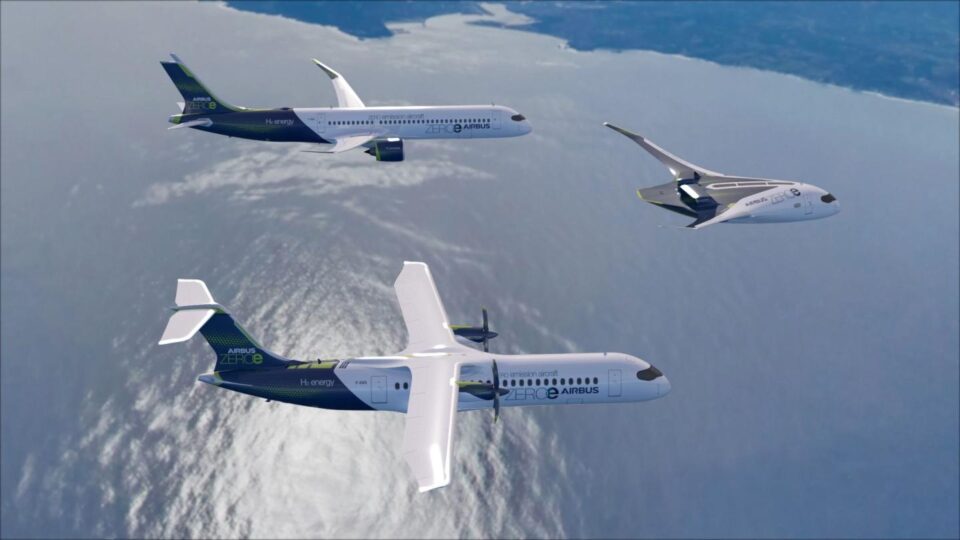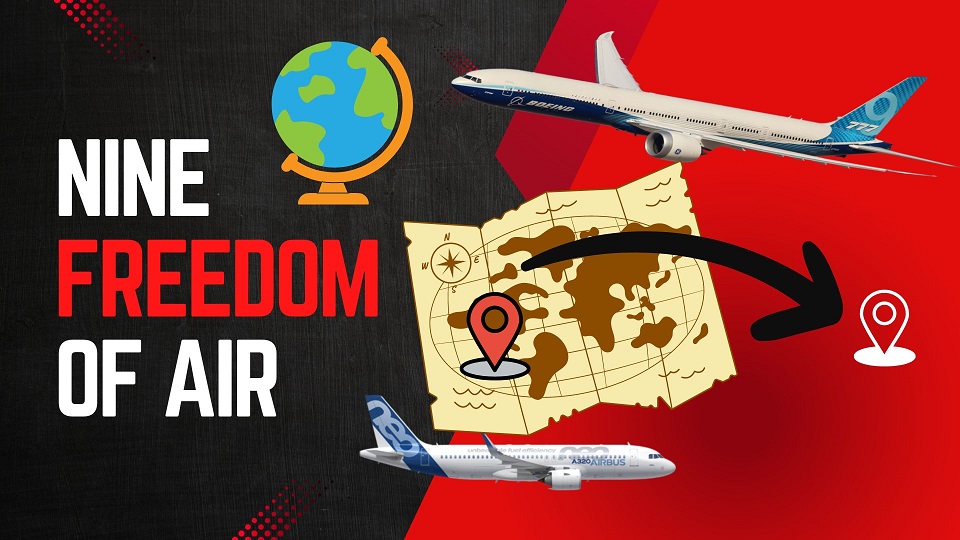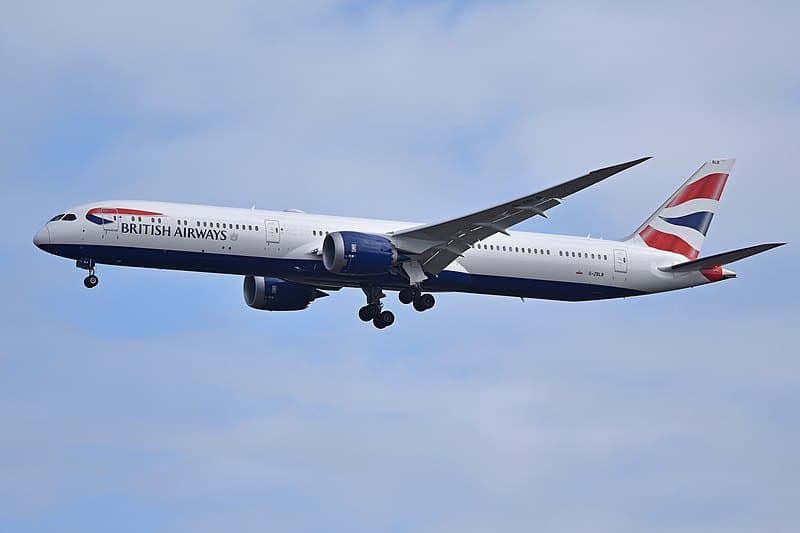Aviation
Airbus revealed how it plans to produce hydrogen-powered aircraft by 2035.

Airbus revealed how it plans to produce hydrogen-powered aircraft by 2035.
The aviation industry is rapidly expanding, and technology is assisting airlines in reducing fuel use and improving passenger safety. Most of the new aero planes launched in the last decade have had fewer accidents, implying that theology has contributed to smoother aircraft operations.
However, as we have seen, most aircraft emissions are a substantial contributor to air pollution. To address this issue, most aerospace companies are designing new aircraft that are anticipated to minimize emissions while still being cost effective.
Airbus and Boeing are working hard to produce the most fuel-efficient and low-carbon aircraft possible. Boeing’s eco demonstrator, which was tested on Boeing 737 Max and 787 Dreamliner aircraft, has previously proven that sustainable aviation fuel can be flown effectively. Airbus, on the other hand, uses 100 percent sustainable aviation fuel in its A320 family of aircraft and the A350.
‘Spirit of Innovation’ stakes claim to be the world’s fastest all-electric vehicle
Airbus provided the first report on its work in developing Hydrogen-powered aircraft, which are expected to be operational by 2035. The development of supportive components for aero planes, as well as their operations, is extremely difficult for the Airbus firm.
Airbus is now developing cutting-edge liquid hydrozoan tanks to usher in a new era of environmentally friendly flight.
One of the most promising solutions for reducing aviation’s climate effect is hydrogen. It emits no CO2 when it is produced using renewable energy sources. It provides roughly three times the energy per unit mass of ordinary jet fuel and more than 100 times the energy per unit mass of lithium-ion batteries. This makes it ideal for aviation propulsion.
Furthermore, hydrogen fuel cells generate electrical power, which is used to supplement the gas turbine, resulting in a highly efficient hybrid-electric propulsion system. All of these technologies work together to provide additional benefits.
Indigo Partners portfolio airlines order 255 A321neo Family aircraft
However, storing hydrogen on an aircraft presents a number of difficulties. Hydrogen may have more energy per unit of mass than kerosene, but it has less energy per unit of volume. To obtain the same amount of energy as one liter of kerosene fuel at normal atmospheric pressure and ambient temperature, approximately 3,000 liters of gaseous hydrogen would be required.
Obviously, this is not possible in flight. One option is to pressurize the hydrogen to 700 bars, which is a method utilized in the automotive industry. In airbus scenario, the 3,000 liters would be reduced to just six liter.
Developing hydrogen storage tanks is a huge challenge. That now consists of an inner and outer tank separated by a vacuum and a specialized material, such as MLI (multi-layer insulations), to reduce heat transfer through radiation.
Ariane’s involvement with Airbus, It is a series of civilian disposable launch vehicles developed by the European Union for use in space launches. This also applies to space technology, which aids in cryogenic testing and fuel sloshing management.
Singapore Airlines Unveils All-New Narrowbody Aircraft Cabin Products
safety aspect is especially significant since spacecraft operations differ from commercial aircraft, in that they must withstand about 20,000 take-offs and landings and must keep hydrogen in a liquid condition for a substantially longer period of time.
Airbus is planning to use hydrogen fuel and engines in its three aircraft frames for operations.
- Turbo fan
Behind the rear pressure bulkhead is the liquid hydrogen storage and distribution system for turbofan engines.
- Turbo prop
The storage and distribution system for liquid hydrogen is positioned behind the rear pressure bulkhead on turboprop engines.
- Blended-Wing Body.
Liquid hydrogen storage tanks are located beneath the wings for blended wing bodies. The propulsion is provided by two hybrid hydrogen turbofan engines.
First Airbus helicopter flight with 100% sustainable aviation fuel
As a last remark, Airbus believes that liquid hydrogen tanks for commercial flights will most likely be metallic. Tanks made of composite materials, on the other hand, may be lighter and more cost-effective to manufacture in the long run.
First A321XLR development aircraft undergoes final assembly
The Zero Emission Development Centers are projected to be completely operational and ready for ground testing in 2023, with flight testing beginning in 2025.

Airlines
The Nine Freedoms of the Air – Jetline Marvel

Most of us travel from one city to another city via road we need to get permission to that specific city if it is in another country like a visa or Road access permission to use its property for revenue purposes to carry passengers and Cargo. Similarly, In the airline Industry, it is also important that the Company have permission to fly and access that country whether it’s for stoppage flying above them, or Operating the passengers within that country This is called Freedom of the Air.
Some countries together they agree with certain conditions to access their Aerospace for to access for the airline to travel above their nation. If the bilateral is done for Their own countries’ airlines or other countries’ airlines. In this chapter, we understand how this thing is carried out. What all the condition has to look into that.
The Freedoms of the Air are international commercial aviation agreements (traffic rights) that grant a country’s airline(s) the privilege to enter and land in another country’s airspace. They were formulated in 1944 at an international gathering held in Chicago (known as the Chicago Convention) to establish uniformity in world air commerce. There are generally considered to be nine freedoms of the air.
Most nations of the world exchange first and second freedoms through the International Air Services Transit Agreement. The other freedoms,chase freedom airline miles when available, are usually established between countries in bilateral or multilateral air services agreements. The third and fourth freedoms are always granted together. The eighth and ninth freedoms (cabotage) have been exchanged only in limited instances
First Freedom:
The basic permission granted to an airline from one country (A) to fly through the airspace of another country (B)
Second Freedom:
The permission for a commercial airplane from country (A) to land and refuel (often called a technical stop) in another country (B).
Third Freedom :
The privilege for an airline to transport paying (Revenue) passengers from its home country (A) to another country (B).
Fourth Freedom
The rights for an airline to transport paying (Revenue )passengers from another country (B) to the airline’s home country (A).
Fifth Freedom
Fifth Freedom (also known as beyond rights): The rights for an airline to transport passengers from its home country (A) to a destination (B), then pick up and carry passengers to other international destinations (C).
Sixth Freedom:
Sixth Freedom (Combination of Third & Fourth Freedoms) The right for an airline to carry passengers or cargo between two foreign countries (B and C), provided the aircraft touches down in the airline’s home country (A).
Seventh Freedom:
The authorization for an airline to operate flights that start in a foreign country (B), skip its home country (A), and transport passengers to another international destination (C).
Eighth Freedom Air
The rights for an airline to transport passengers from one location within a country’s territory (B) to another point within the same country on a flight originating in the airline’s home country (A). This right is commonly referred to as cabotage and is notably scarce outside of Europe.
Ninth Freedom Air
The entitlement for an airline from a specific country (A) to begin a flight in a foreign country (B) and transport passengers from one location to another within that foreign country. This concept, also referred to as stand-alone cabotage, distinguishes itself from the traditional aviation definition of cabotage by not directly involving the airline’s home country.
Aviation
Air India’s B747 Makes Its Final Journey, Waving Farewell to Fans

In a poignant moment marking the end of an era in aviation history, Air India’s iconic Boeing 747 aircraft, affectionately known as the ‘Queen of the Skies,’ embarked on its ultimate journey from Mumbai’s international airport.
The departure, bound for Plainfield, USA, where it will undergo dismantling and part-stripping under the ownership of American AerSale, signals the closure of a storied chapter for the airline.
Once revered for transporting dignitaries ranging from prime ministers to presidents, the Boeing 747 has etched itself into aviation lore. Yet, as airlines worldwide pivot towards more contemporary and cost-effective aircraft, Air India’s decision to bid farewell to its remaining Boeing 747s reflects the pragmatic realities of today’s aviation landscape.
The sale of these majestic planes to AerSale represents a strategic move by Tata Group, Air India’s new custodian, towards optimizing operational efficiency and embracing modern industry standards. Out of the four aircraft sold, two will be repurposed into freighters, while the remaining pair will be meticulously disassembled to salvage valuable components.
The final flight from Mumbai witnessed a touching tribute as pilots performed a traditional ‘Wing Wave,’ symbolizing the conclusion of the Boeing 747‘s distinguished service with Air India. This poignant gesture encapsulates the deep sentiment attached to the aircraft’s departure and its significant contribution to the airline’s legacy.
As the Boeing 747 embarks on its journey to Plainfield, USA, nostalgia permeates the air, evoking memories of its maiden flight on March 22, 1971. Over five decades, Air India operated a total of 25 Boeing 747s, each leaving an indelible mark on the annals of aviation history.
Middle East
British Airways Resumes Daily Flights to Abu Dhabi, After 4-Year hiatus

British Airways made its way back to Abu Dhabi, landing at Zayed International Airport. Following a four-year break in service, both crew and passengers were greeted with enthusiasm.
In the summer of 2024, British Airways plans to launch a daily route, utilising a Boeing 787-9, from London Heathrow to Abu Dhabi. The new route enhances ties between the UAE and the UK and expands vast worldwide network, catering to passengers who may be visiting friends and family or travelling for business.
Arriving in Abu Dhabi at 08.30+1, flight BA073 to Abu Dhabi leaves London Heathrow at 22.25. Departing at 10.10 and landing at London Heathrow at 15.20 is the inbound flight (BA072).
The chief executive officer and managing director of Abu Dhabi Airports, Elena Sorlini, stated: “We are delighted to welcome British Airways to Zayed International Airport. Their daily schedule is expected to improve connectivity and stimulate travel and business.” Visitors may experience the dynamic capital of the United Arab Emirates like never before at our brand-new, award-winning, state-of-the-art terminal, where they will be welcomed with the best kind of Emirati hospitality.”
Flight schedule:
| London Heathrow (LHR) to Zayed International (AUH)All times are local | ||||||
| Season | Flight number | Departing LHR | Arriving AUH | Flight number | Departing AUH | Arriving LHR |
| Summer ‘24 | BA73 | 22:25 | 08:30+1 | BA72 | 10:10 | 15:20 |
| Winter ‘24 | BA73 | 22:25 | 09:30+1 | BA72 | 11:10 | 15:20 |































